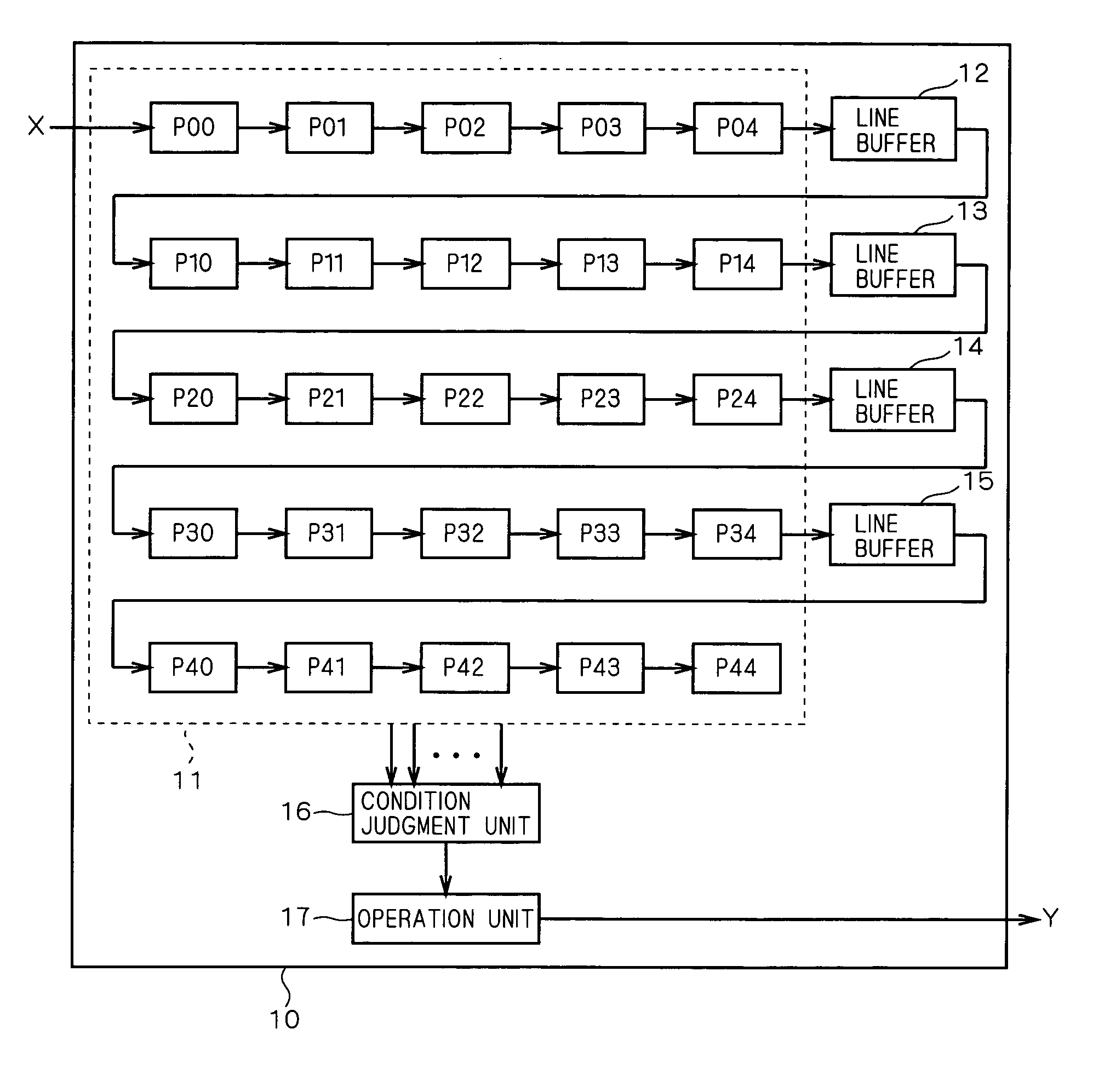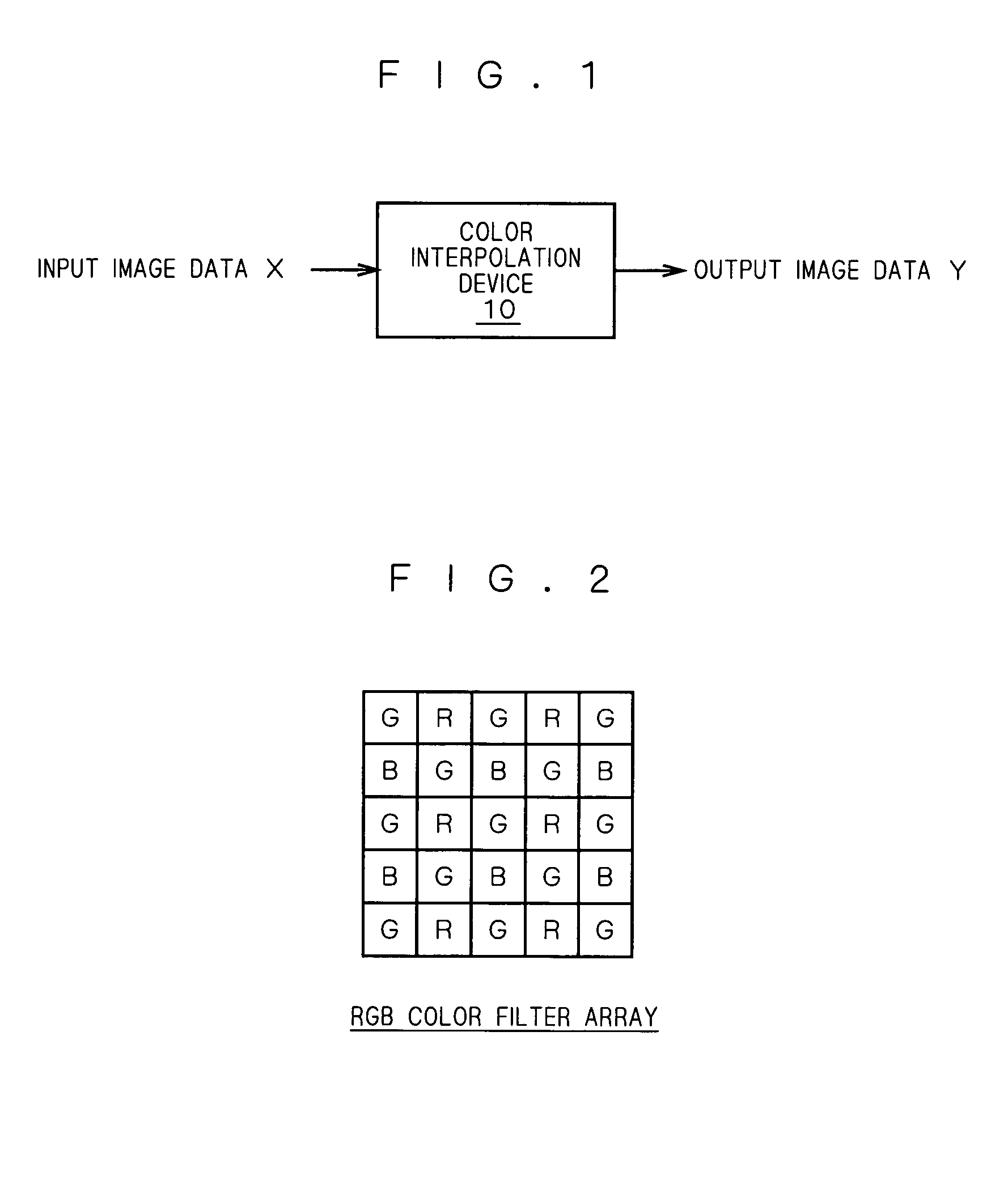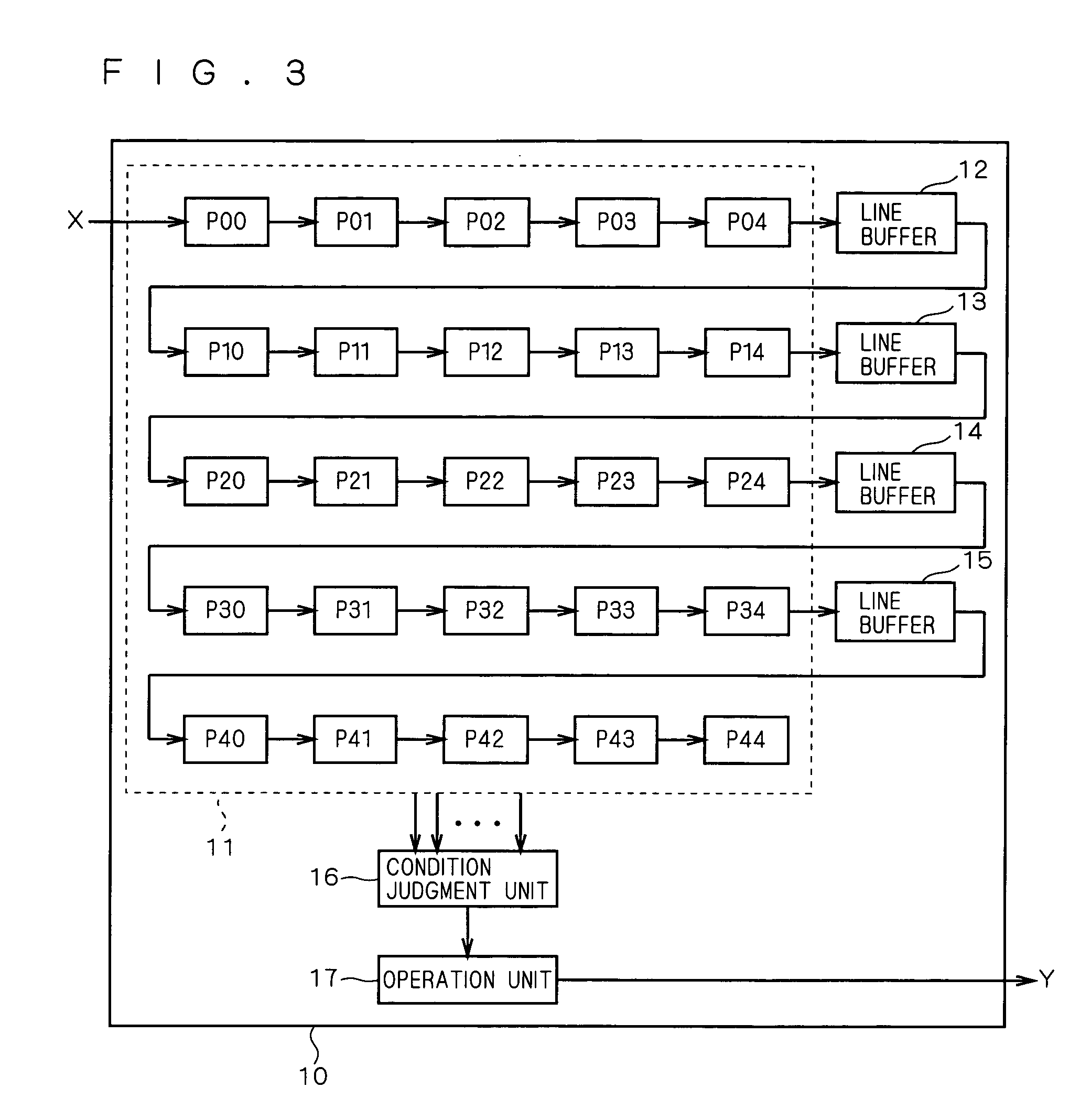Color interpolation method
- Summary
- Abstract
- Description
- Claims
- Application Information
AI Technical Summary
Benefits of technology
Problems solved by technology
Method used
Image
Examples
Embodiment Construction
[0023] Hereinafter, the preferred embodiment of the present invention will be discussed, referring to figures. As shown in FIG. 1, a color interpolation device 10 performs color interpolation on input image data X and outputs color-interpolated output image data Y.
[0024] The input image data X is, e.g., data picked up by a CCD image pickup device used in a digital camera. In this preferred embodiment, it is assumed that the CCD image pickup device is a 1-chip CCD having a color filter of RGB Bayer array as shown in FIG. 2. In the RGB Bayer array, G (Green) filters are arranged in a checkered pattern and R (Red) filters and B (Blue) filters are arranged alternately by lines. Therefore, the input image data X is data having a pixel value of any one color of R (Red) component, G (Green) component and B (Blue) component for one pixel. Such input image data X is inputted to the color interpolation device 10 in an order of colors, e.g., G, R, G, R . . . or B, G, B, G . . . or the like.
[...
PUM
 Login to View More
Login to View More Abstract
Description
Claims
Application Information
 Login to View More
Login to View More - R&D
- Intellectual Property
- Life Sciences
- Materials
- Tech Scout
- Unparalleled Data Quality
- Higher Quality Content
- 60% Fewer Hallucinations
Browse by: Latest US Patents, China's latest patents, Technical Efficacy Thesaurus, Application Domain, Technology Topic, Popular Technical Reports.
© 2025 PatSnap. All rights reserved.Legal|Privacy policy|Modern Slavery Act Transparency Statement|Sitemap|About US| Contact US: help@patsnap.com



